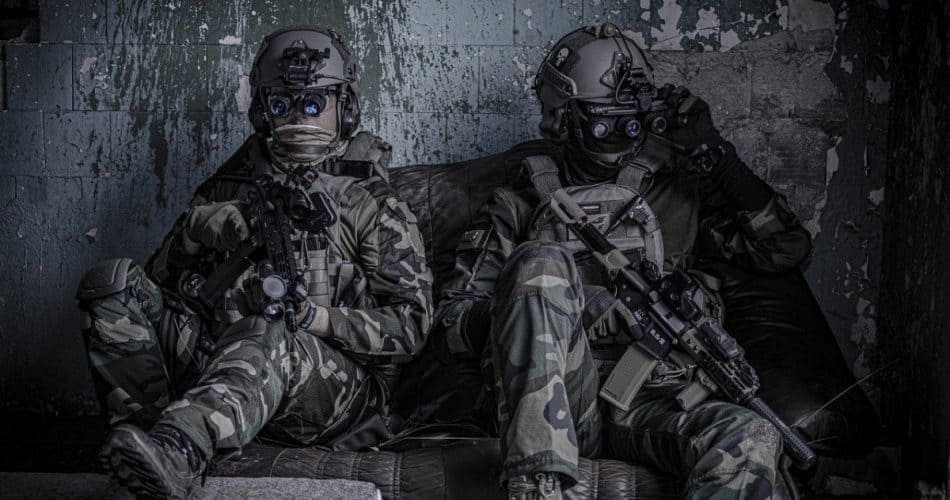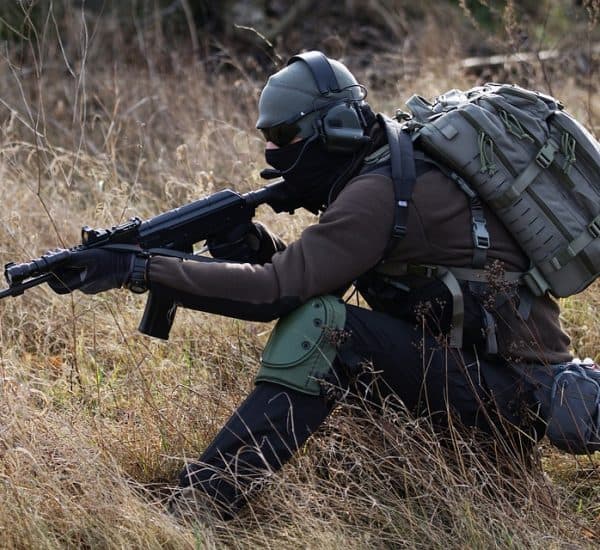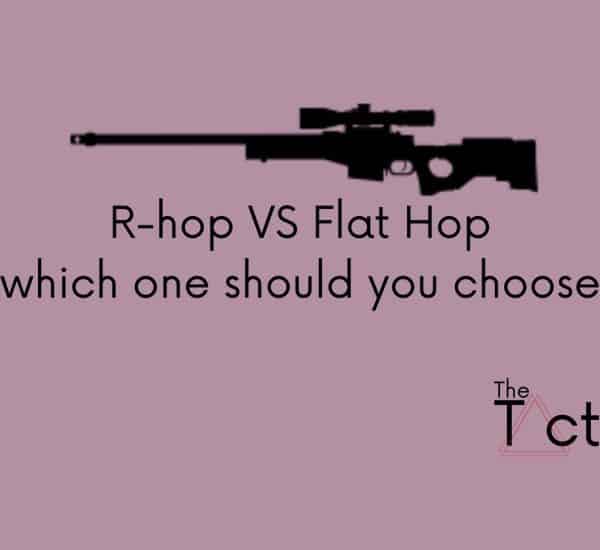Airsoft can be considered both a sport and a hobby depending on who you talk to. Some people spend thousands of dollars on tactical gear, airsoft guns, and airsoft field entries, and some like to purchase replica firearms for cost and safety reasons.
Airsoft, for the sake of this article, is a sport or adventure game where players go head-to-head with each other to complete objectives. Airsoft guns are, in most cases, replica firearms that are VERY close in physical dimensions, colors, and weight to real firearms. They differ from the guns they’re based on due to only being able to fire plastic BBs, ranging from 6MM to 8MM in diameter and varying weights, measured in grams.
Airsoft guns are restricted at most fields to 400 Feet Per Second (FPS) with .25 gram BBs, with exceptions made for airsoft sniper rifles in the hands of those proven to use them safely and concerning others.
Where did Airsoft Come from? – Airsoft History
Airsoft was brought into being in the 1970′s due to restrictive gun control laws in Hong Kong and Japan that prohibited citizens from owning real firearms. Utilizing radio-controlled car parts readily available in those countries/territories, clever individuals were able to configure them in a fashion that created an air pump capable of fully automatic fire when placed in a replica firearm body.
Lightweight plastic BBs lessened the chances of injury and became the norm. Japanese law restricted the amount of Joules a projectile could carry through the air, so 280 FPS was the norm for airsoft for years. Many Chinese replicas have begun producing airsoft guns that fire over 400 fps in recent years, making them illegal for most playfields without a downgrade, yet drastically upping the competition.
A surge in manufacturers has occurred during this time frame, with airsoft gun manufacturers in China, Taiwan, Japan, and the US taking the lion’s share of the market.
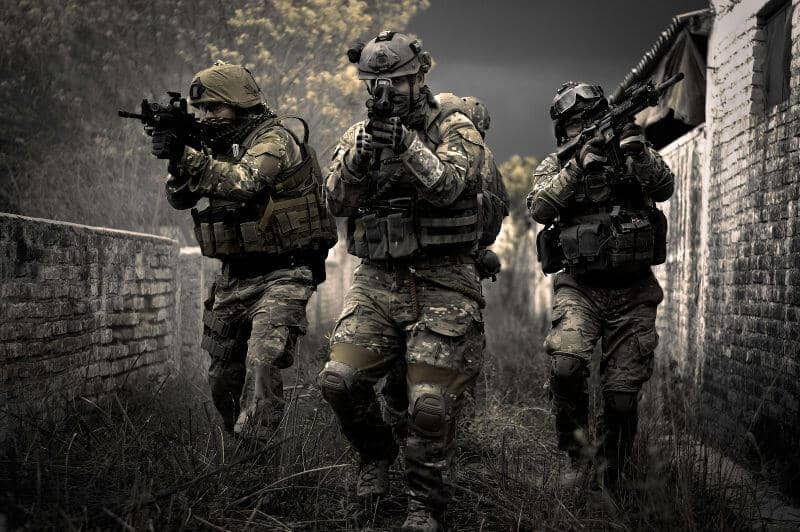
Airsoft Comparisons to Paintball
Airsoft is often compared to paintball because of its prominence in the United States and the sheer profit margin to businesses that host paintball games vs. Airsoft games. Most fields that offer paintball require that players only use paint sold at their field. When I played in the 1990′s, paintballs would sell for 80 dollars a case at a paintball field, and there would be 2000 paintballs in each case.
If you factor in the cost of the gas fills required to fire a paintball along with your 20+ dollar field fee, it’s easy to recognize that every time you pull that trigger, you’re spending over 0.05 cents.
Not so with Airsoft. In most cases, there are no gas costs associated with the vast majority of airsoft use. True, most airsoft pistols and some airsoft rifles and shotguns utilize a propane/silicone lubricant mixture called green gas, but they seldom get used outdoors and are limited to warm weather use.
Furthermore, a bag of 5000 good quality, tournament grade, .25 gram airsoft bb’s will only cost you approximately 15-20 bucks depending on the airsoft bb brand and who sells them.
Paintballs vs. Airsoft BBs
Paintball marks your clothing, skin, and gear with gooey, vegetable oil-based paint that not only creates a mess but can also stain. Paintballs are typically regulated to fire at 260-280 FPS. However, they carry far more mass than BBs, and I’ve had some wonderful welts from them. Because of the nature of the paint, full face mask coverage is a requirement.
Airsoft requires players to use their moral obligation to honor their hits and call themselves out when shot. They leave marks as well, but only 6mm in diameter, and the pain in most cases lasts for but a brief second of impact. There’s no mess from the rounds.
Airsoft Guns vs. Paintball Markers
Airsoft guns look and feel like real firearms. They do not require external gas sources (in most cases, some have been created, though again, usage of external tank gas-powered airsoft guns is extremely limited.). They generally do not use plumbing parts like paintball guns. The closeness in design allows for those used to a weapon system to pick one up and instantly know how to use it.
Gear used by those in the military works fine with airsoft. They can take all the same external accessories as real weapons, and aside from ballistics, provide a superior training tool to agencies and militaries not using Simunitions vs. paintball guns.
Airsoft Scenarios vs. Paintball Games
Paintball has tried to morph itself into high-speed games called speedball, where the entire emphasis is based on elimination only, which is achieved by outflanking opposing team members. Ironically, most paintball players prefer to play this way to get dirty in the woods.
Airsofters prefer scenario-based play with objectives to complete. Military-style tactics are utilized to overcome opposition forces. Aside from some indoor fields, elimination play is seldom utilized as a play on legal airsoft fields.
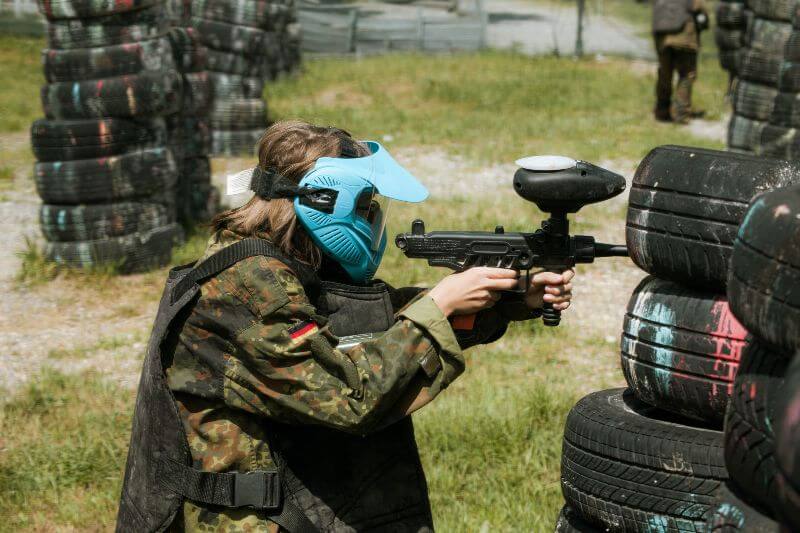
Airsoft Age Requirements
How Old do You Need to be to Play Airsoft?
Most fields require you to be 12 years old to play airsoft. Parents or guardians are required to sign waivers relieving the field owners of responsibility for injuries while on the property.
It’s highly recommended that an adult play with youth as not only is it a fun way to spend time with a kid, but a good role model in a sport filled with testosterone can go a long way toward promoting good behavior, honest gameplay, and safe habits.
How Old do You Need to Be to Purchase an Airsoft Gun in Connecticut?
You need to be 18 years of age or older to purchase an airsoft gun in Connecticut. They are not toys and can cause serious injury or death if misused. Law enforcement will treat them as real weapons if they see or are called to a scene where they are improperly used or brandished. Treat all Airsoft guns with the same respect and safety rules as you would a real weapon.
How Can you Protect Yourself from Airsoft Injuries?
As with anything else, you can never truly control other people or environments, but you do have a lot of control over your own safety. Proper boots to avoid ankle twists, full skin coverage via gloves, full-length clothing and neck coverings (shemaghs work wonderfully), and full-face paintball or mesh masks with full-seal ANSI-rated goggles will prevent the lion’s share of airsoft injuries.
Mesh airsoft goggles should be avoided due to BB’s shattering on the screens. Constant hydration and breaks when required will combat heatstroke in the summer.
Conclusion
I hope this answers the majority of questions regarding the sport. Feel free to contact me with any others, and I’ll answer them to the best of my ability and possibly update this article as well. As I write more articles, I’ll be linking to other topics to assist new players with getting into airsoft.

